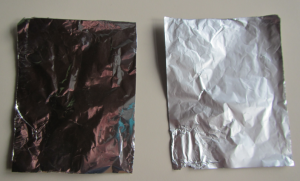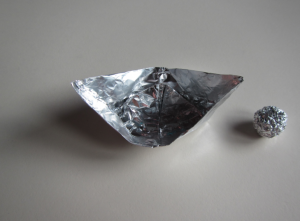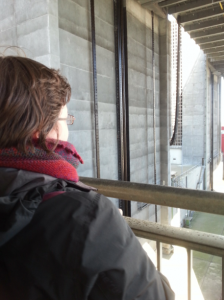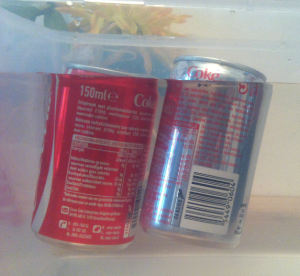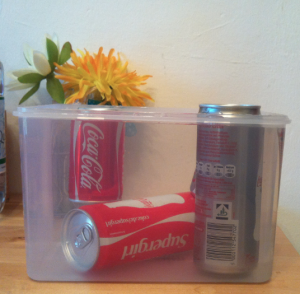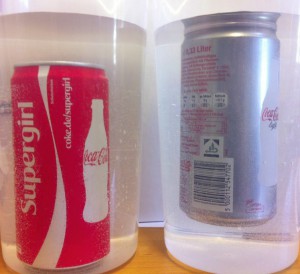A pet peeve of mine are books on handcrafts or experiments or any kind of activity that come with drawings instead of pictures, because I always suspect that it was easier to draw whatever the author wanted to show than to take a photo of it. Which, to me, suggests that it isn’t really all that easy to conduct the experiment or build the wicker basket or whatever it is you are attempting to do.
So here is an experiment that I had seen drawings of and that Martin and I went to try: on swimming and sinking.
Step 1: Take two identical pieces of tin foil.
Step 2: Build a boat out of one of the pieces, and a ball out of the other one.
Step 3: Place the boat and the ball on the water surface.
Step 4 to step 9: (And these are the steps that the nicely drawn instructions always omit) Watch the ball float on the surface. With growing annoyance, try to make the ball as compact as possible in order to make it sink.
Step 10: This is what we wanted to see after step 3 already. Even though the boat and the ball are made of identical pieces of tin foil and their mass is the same, the boat floats while the ball sinks.
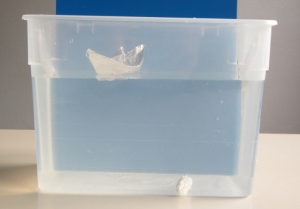
A boat and a ball made of identical pieces of tin foil. Boat floats, ball sinks. Nice demonstration!
What do we learn from this? Always test experiments before using them as a demonstration, especially those that look extremely simple!
